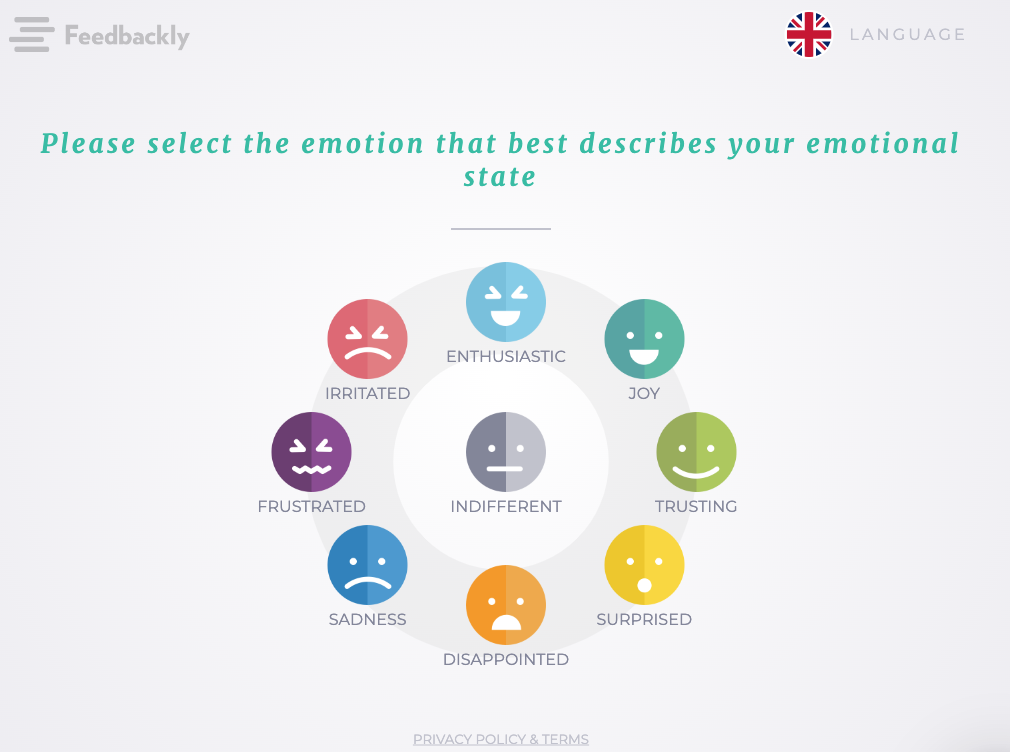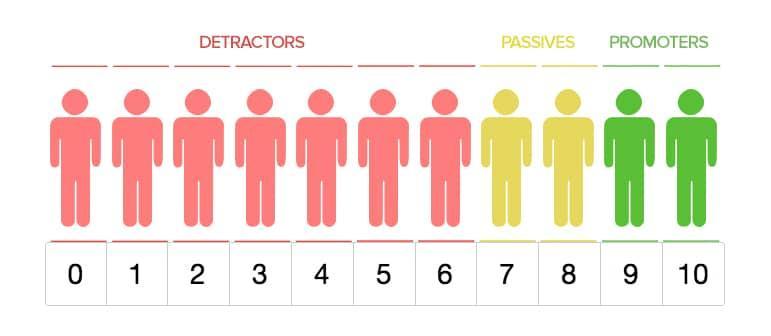Customer Experience (CX) is important for your brand’s growth, and it’s only gaining more momentum every year. Unarguably, a good CX program needs Key Performance Indicators (KPIs). They help you measure and improve different aspects of CX, like customer satisfaction, loyalty, and happiness!
If you hope to step up your CX game this year and drive your business forward with fierce growth, you have come to the right place. Here are the top 4 Customer Experience KPIs to prioritize in your customer experience management program. They are core KPIs that every business needs to use, even if you are just starting!
1. Emotional Value Index (EVI®)
EVI® is a quintessential CX KPI designed to measure your customers’ emotional experience. You can use it to identify your customers’ state of emotions at different touchpoints. Best of all, EVI® can be applied at any stage in the customer journey.
The EVI® survey asks the customers to denote the emotion that best describes how they feel about the particular touchpoint or experience. Emoticons are displayed in a circular form to avoid survey bias.

For calculating and analyzing EVI®, the emotions are clustered based on their level of impact, and each category is assigned a value. Calculating the weighted average of each cluster will give a score between -1 to +1, which can then be presented as a percentage value.
EVI® is a very useful metric that helps businesses streamline their customer journey and improve their overall experience. With an open-ended question or another KPI used alongside it, you can identify the reasons for the score.
2. Customer Satisfaction Score (CSAT)
CSAT aims to measure how satisfied a customer is with the product, service, or interaction with the brand. As customer satisfaction is paramount for a business’s success, the KPI is used by almost all businesses in every industry. You can use CSAT at any stage in the journey to keep track of your customer sentiments.
The CSAT survey asks the customer to rate their satisfaction level on a 5-point scale where,
1 – Very unsatisfied
2 – Unsatisfied
3 – Neutral
4 – Satisfied
5 – Very satisfied
For calculating the CSAT score, you can multiply the number of responses in each option with the corresponding multiplication factor and Then, get the total and present the value as a percentage. Alternatively, you can derive the number of satisfied and very satisfied responses as a percentage of the total number of responses to calculate CSAT.
3. Net Promoter Score (NPS)
NPS is an important KPI for CX as it measures customer loyalty through advocacy. The metric can also be used to forecast business growth and potential client base. The NPS survey can be applied in the post-purchase phases to gauge customer advocacy and retention levels.
The single-question survey asks the customers to rate their likeliness to recommend the business to others on a scale of 0-10. The responses are then categorized as,
- Promoters – a rating of 9 or 10
- Passives – a rating of 7 or 8
- Detractors – a rating of 6 or less

Calculating NPS is fairly straightforward. Once you get the percentage of responses in each category, it’s a matter of deducting the detractors from passives. One of the drawbacks is that it offers limited data to make decisions. NPS backed by another survey like EVI® can offer a more comprehensive analysis of customer loyalty.
4. Customer Effort Score (CES)
CES looks at the effort that customers have to put in to do business with your brand. The CES survey is used in the post-purchase phases, especially to measure the efficacy of customer support. You can use it to identify the effort of completing a transaction, resolving an issue, or obtaining information about a product.
The survey question asks the customer to rate the effort on a scale of 1-5 (some use a 7-point scale), where,
1 – Very high effort
2 – High effort
3 – Neutral
4 – Low effort
5 – Very low effort
You have to get the total sum of responses and divide it by the number of total responses to derive the CES score. Customers prefer stores that offer a streamlined and effortless customer experience to help them find and purchase goods easily and that’s where CES can help you get there while reducing churn rates.




